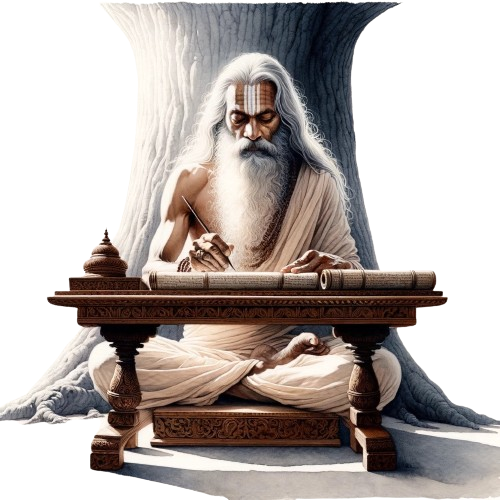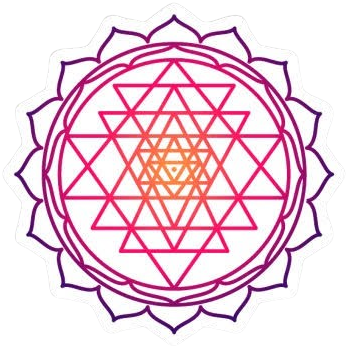
Yogasutra195
Perennial Psychology, Wisdom Beyond Time: Explore the Depth of Yoga-Sutras
Welcome to our comprehensive guide on the Yoga Sutra, the aim of establishing this website is to provide an easy access to the teachings of the ‘Yogasutra of Sage Patanjali’ for everyone. According to the International Yoga Federation, approximately 300 million individuals are currently practicing yoga worldwide. Thus, it becomes both: a privilege and a responsibility for these practitioners to understand the true essence of yoga.
The landscape of yogic practices has transformed notably over the periods of time, mirroring changes in our goals. It is crucial to acknowledge that our purpose shapes our perspective and defines our pursuit. Regrettably, some of these shifts may not fully honor the intentions of ancient sages. We’ve narrowed the scope of yoga to merely physical exercises, failing to recognize its holistic nature and full potential. Nevertheless, it’s essential to appreciate the valuable contributions of modern times. The contemporary therapeutic approach, employing techniques such as asana, pranayama, and yoganidra for healing, indeed signifies a commendable progress.
YS of Patanjali is the Living source text of Yogic – Wisdom traditions and their practices. Since remote antiquity, this text has served as a guiding light for all those who walked on the path of yoga. It is attributed to Sage Patanjali, who is believed to have lived around 400 BC. The term “Sutra,” derived from Sanskrit meaning “thread,” metaphorically represents an ancient writing style known for its technical precision. This format of writing originated in ancient India around 900 BC, and has been utilized by masters of various traditions to articulate their teachings. A sutra is a concise and precise, error-free technical statement, characterized by clarity and depth.
In Sanskrit Vedic parlance, “Darshana” is the word for philosophy, which literally means a sight or vision (realization) that enables us to see clearly. The YS of Patanjali is the foundational text of Yoga Darshana. The purpose is what determines the pursuit. Hence, an attentive study of the Yoga Sutras is meant to give us a purpose, or bring perspective into our practices, enabling those practices to be more effective.
शिवास्ते सन्तु पन्थानः॥
May your path be auspicious.

मङ्गलाचरणम्
Mangalacharana
Prayer of invocation/Homage to Sage Patanjali
योगेन चित्तस्य पदेन वाचां। मलं शरीरस्य च वैद्यकेन॥
योऽपाकरोत्तं प्रवरं मुनीनां। पतंजलि प्राञ्जलिरानतोऽस्मि॥
Yogena cittasya padena vācāṁ malaṁ śarīrasya ca vaidyakena।
yopākarottaṁ pravaraṁ munīnāṁ patañjaliṁ prāñjalirānato’smi॥
अर्थ / Meaning
योग से चित्त का, पद (व्याकरण) से वाणी का व वैद्यक (आयुर्वेद) से शरीर का मल, जिन्होंने दूर किया, उन मुनि श्रेष्ठ पतञ्जलि को मैं अञ्जलि बद्ध होकर नमस्कार करता हूँ।
I bow down with folded hands to Sage Patanjali, the most exalted among the most contemplative sages, who removed the impurities of the mind-field through yoga, of speech through Sanskrit-grammar and of the body through Ayurveda.
यस्त्यक्त्वा रूपमाद्यं प्रभवति जगतोऽनेकधाऽनुग्रहाय। प्रक्षीणक्लेशराशिः विषमविषधरोऽनेकवक्त्रः सुभोगी॥
सर्वज्ञानप्रसूतिः भुजगपरिकरः प्रीतये यस्य नित्यं। देवोऽहीशः स वोऽव्यात् सितविमलतनुर्योगदो योगयुक्तः॥
Yastvaktvā rūpamādyaṁ prabhavati jagato’nekadhā’nugrahāya। prakṣīṇakleśarāśiḥ viṣamaviṣadharo’nekavaktraḥ subhogī॥
sarvajñānaprasūtiḥ bhujagaparikaraḥ prītaye yasya nityaṁ। devo’hīśaḥ sa vo’vyāt sitavimalatanuryogado yogayuktaḥ॥
अर्थ / Meaning
हम भगवान् आदिशेष को साष्टांग प्रणाम करते हैं, जिन्होंने जगत् के कल्याण के लिए अपने मूलरूप को त्यागकर पतञ्जलि का रूप धारण किया, जिनके समस्त क्लेश क्षीण होकर नष्ट हो चुके हैं, जो विषम विषधर हैं, जिनके सुन्दर फणयुक्त अनेक मुख हैं, जो समग्र ज्ञान के स्रोत हैं, जिनकी प्रसन्नता के लिए उनके अनुचर उनकी प्रदक्षिणा करते हैं, जिनका शरीर श्वेत दीप्ति से युक्त और निर्मल है, जो स्वयं योगारूढ़ और योग को प्रदान करने वाले हैं, ऐसे वह देव हमारी सदा रक्षा करें।
May He Who abandons [his] primordial form and nature, appears as a master (Pra-bhu) for [conferring] manifold grace to the world; Whose accumulation of afflictions has diminished, vanquished; Who has an uneven [number of] poison-bearing snakes [as his body]; He of many faces, with beautiful expanded hoods; The source of the birth of all [branches of] knowledge; For whose pleasure the snakes ever [form the] parameters; He with the bright white stainless form, In yoga joined, the yoga-giver, The divine (deva) Lord of Serpents – Grant you [all] His guardianship and protection.
About Sage Patanjali

Sage Patañjali holds a position of utmost reverence in the annals of yoga history as the author of the Yoga Sutras. He is thought to have lived between the 2nd century BCE and the 5th century CE, though some interpretations extend his presence even further back in time. If we rely solely on the evidence provided by modern archaeological excavations, literary studies, and linguistic analyses, Sage Patañjali may seem quite elusive. It is difficult to locate him definitively in one place at one time. Several ancient texts are attributed to him, and archaeological findings indicate his presence in more than one location across modern-day India.
- Some interpretations suggest he was born in Kashmir into a Brahmin family, while others claim it was in Gonarda (in Punjab).
- According to Patañjali-charita, his mother’s name was Goņikā. He is remembered in tradition as Gonika-putra (the son of Goņikā), indicating her as a great master herself. Therefore, there should be no issue in accepting that he was initiated into the path of yoga by his mother.
- There existed a Patañjali contemporaneous with Shunga-dynasty king Pushyamitra, extensively mentioned in his text on Sanskrit grammar/Mahabhasya.
- Additionally, he is also recognized as Charaka (a wandering adept), a siddha, among the twenty-eight lords of siddhas (siddhesha) listed in the Bhagavata-purāṇa (6.15.12-15).
- In the Siddha tradition of the Tamil country, Patañjali is one of the eighteen revered siddhas. In the Tiru-mantiram of Tiru-Mular (1.4.67), he is said to be one of the eight founders of the Guru tradition who worshipped in the ‘Holy Sabha’ along with Vyāghrapada. Furthermore, it is recounted that he received knowledge through the grace of Nandi.
- In the texts and citations about Patañjali, his name is frequently associated with other founders of the Sanskrit grammatical tradition, such as Panini and Vararuchi-Katyayana (7th-2nd century BCE). Even today, the texts of Panini, Vararuchi-Katyayana, and Patañjali are studied as a grammatical composite whole. These three masters are collectively referred to as the Muni Traya (‘the triad of contemplative sages’) One of the most notable citations is – “बहुवित्तु पतञ्जलिः” (“bahu-vit tu Patañjaliḥ”), meaning “Patanjali is multiscient [one who knows much about many sciences].” This attribute is clearly evident in the verse which states Patañjali to be an acharya of medical science (vaidyaka), grammar (vyakaraṇa), and yoga, with the ability to rectify the flaws of body, speech, and mind respectively through his teachings in each of these disciplines.
Chapter 1
Samadhi Pada
This chapter is primarily on Samadhi. Which is the pinnacle of all yogic practices. The popular translation for Samadhi in English is : Meditative – absorption; the finality of mediation where the sense of individuality gets completely absorbed into the object one was meditating on.
This chapter studies the human psyche and consciousness in great – detail. It speaks of the different grounds of mind-field, different functions, and operations of mind-field, the need of establishing the total control over those modifications, the twofold method in order to acquire the control, types of samadhis, types of practitioners, the concept of Ishvara – pranidhana, it speaks of the methods and importance of purifying and pacifying the mind – field, it points out the obstacles or the hurdles that one might face along the path, and also the means to overcome them, the concept of Samapatti or the coalescence, the range of subtle – objects, and the truth bearing wisdom.
Chapter 2
Sadhana Pada
This chapter is primarily on practice. It begins with threefold practice of Kriya – yoga, then in details speaks of the five fundamental causes of human suffering, the nature and purpose of the seen (the material principle), the nature of the essential nature of the seer, the ultimate state of discrimination, the sevenfold stages of a yogi’s wisdom, and then finally it completes itself by covering the first five practices of the Ashtanga yoga.
Chapter 3
Vibhuti Pada
This chapter is primarily on the gains or the attainments of the yogic – practices, called siddhis or mistic – power. It begins by concluding the definition of the last three practices of Ashtanga yoga viz. Antarangas, then combines them into a single practice; samyama. This highly refined state of attention is then brought to probe deeply into aspects of creation to unfold the secrets of the universe and to awaken ‘power’ or siddhis’ Super normal/natural capacities or abilities). These powers are not the end point in yoga. However, they arise as the result of intense concentration/practice.
Chapter 4
Kaiwalya Pada
Kaivalya means the state of being absolute, alone; i.e., the state where the soul becomes solo. It is the state of realization of the true nature of self within final samadhi.
It begins by concluding the concept of siddhi, by presenting the various means of obtaining them, the cause of the transformation into another life, the concept of Nirmanachitta (created-minds) and what controls them, the concepts of karma and rebirth, guna – dharma, the nature of time, the vision of discernment or discriminatory wisdom, Dharmamegha-samadhi, aloneness (liberation).
Articles you may like
YOGA is a gradual transition from becoming to BEING, a journey from constantly striving and transforming to a state of PRESENCE & STILLNESS.
~ Vimal Sharma

शिवास्ते सन्तु पन्थानः॥
May your path be auspicious.


Share This
Share this post with your friends!